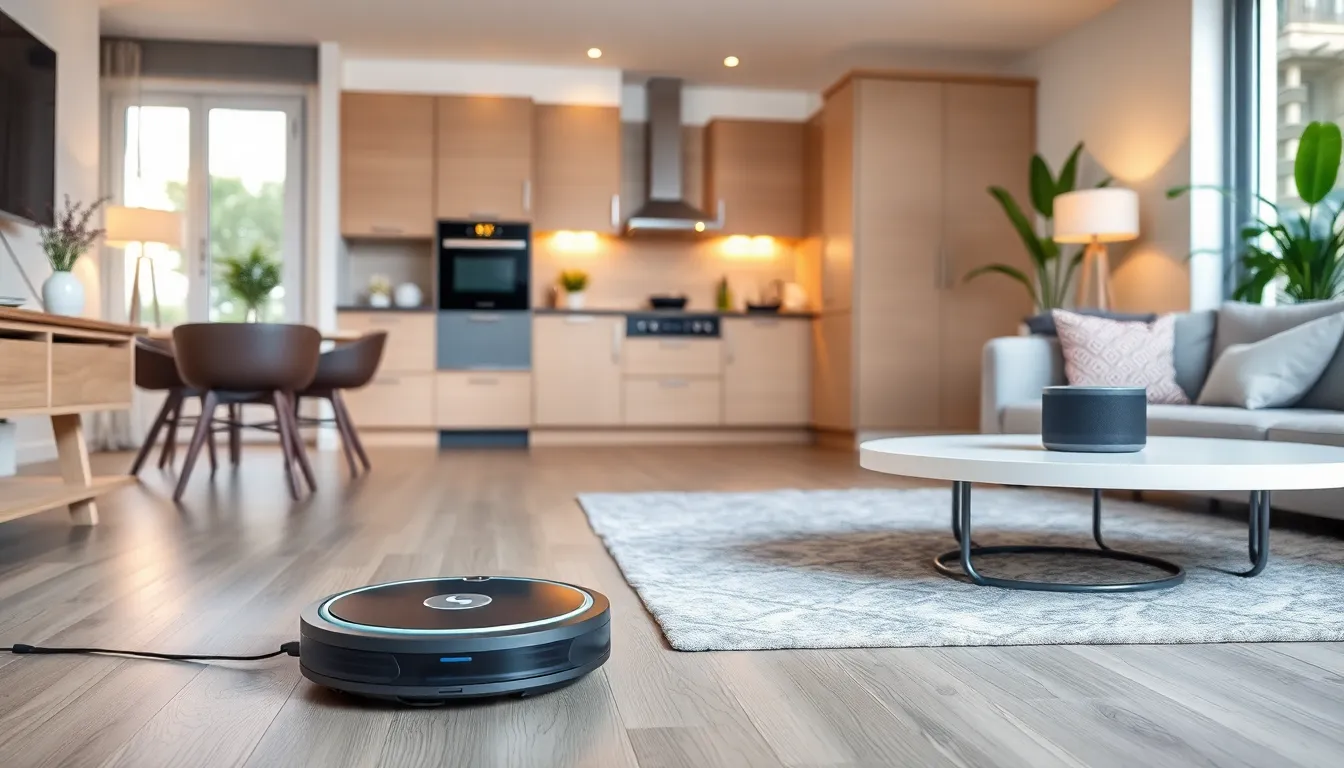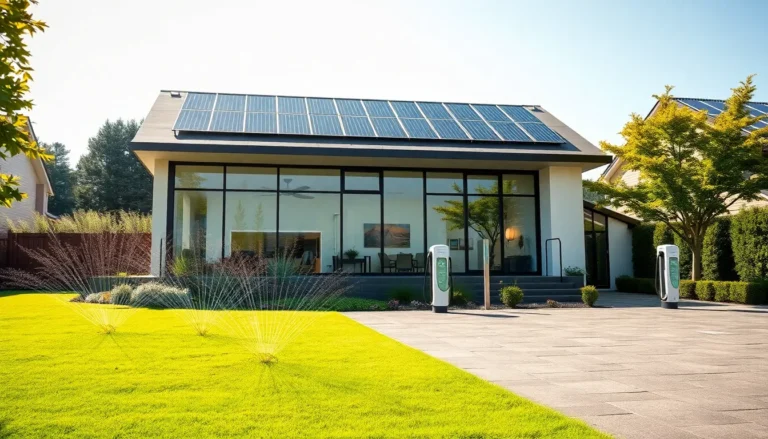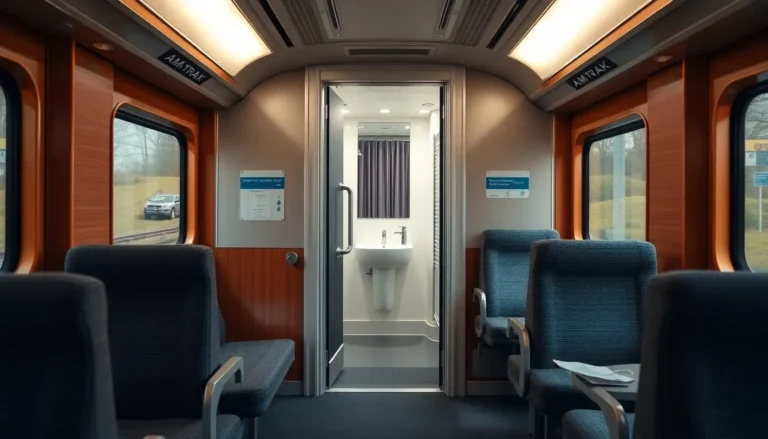Imagine a world where your home takes care of you instead of the other way around. Welcome to the era of automated home care, where technology meets comfort in a delightful dance. Gone are the days of juggling chores and appointments like a circus performer—now, your smart home can handle it all while you kick back and enjoy that well-deserved cup of coffee.
From smart assistants that remind you to take your meds to robotic vacuum cleaners that prevent dust bunnies from staging a coup, automated home care is revolutionizing how we live. It’s not just about convenience; it’s about enhancing quality of life and making everyday tasks feel like a walk in the park. So, let’s dive into the wonderful world of automated home care and discover how it can transform your living space into a sanctuary of ease and efficiency.
Table of Contents
ToggleOverview of Automated Home Care
Automated home care leverages advanced technology to enhance everyday life. Smart devices play a crucial role in streamlining tasks, improving efficiency, and providing valuable peace of mind for occupants. Many individuals benefit from tools like voice-activated assistants that manage schedules or monitor health needs.
Robotic devices contribute significantly by performing routine chores such as vacuuming and lawn maintenance. These devices not only maintain cleanliness but also free up time for users to engage in other activities. Sensors integrated into home automation systems monitor environmental factors like temperature and air quality, ensuring a comfortable atmosphere while promoting well-being.
Convenience ranks high among the advantages of automated home care solutions. For instance, systems can control lighting and security remotely, allowing users to manage their homes from anywhere. Additionally, reminders for medication and appointments increase adherence to health regimens, offering greater independence to individuals who may require assistance.
Savings on energy bills also result from efficient home automation. Smart thermostats adjust heating and cooling based on occupancy, significantly reducing unnecessary energy use. Enhanced safety features, such as smart locks and surveillance cameras, further improve security, offering families peace of mind.
The integration of automated home care transforms traditional living spaces into smart environments that promote wellness and comfort. As technology continues to evolve, opportunities for greater customization and personalization within automated home care systems grow, offering tailored solutions to individual needs and preferences. Implementing these solutions truly enhances quality of life and creates a harmonious living experience.
Benefits of Automated Home Care

Automated home care significantly enhances daily living by providing numerous benefits. This approach transforms standard homes into smart environments that prioritize convenience and well-being.
Improved Efficiency
Smart devices streamline daily tasks, allowing users to accomplish more in less time. Voice-activated assistants enable quick access to information, facilitating task management and scheduling. Energy-efficient appliances reduce energy consumption while automating routine functions, thus lowering utility bills. Remote access allows individuals to control various systems from anywhere, ensuring comfort without interrupting daily activities. Robotic vacuum cleaners maintain cleanliness, providing a tidier space with minimal effort. By integrating technology into everyday life, automated home care allows individuals to focus on more meaningful pursuits.
Enhanced Safety
Automated home care incorporates advanced security features that ensure peace of mind. Smart locks provide convenient access, reducing the risk of unauthorized entry. Surveillance cameras equipped with real-time alerts monitor activities around the home, enhancing security. Environmental sensors detect smoke, carbon monoxide, or water leaks, alerting residents to potential hazards. Automated lighting systems simulate occupancy when no one is home, deterring intruders. These safety measures create a secure environment, allowing individuals to feel safer and more comfortable in their living spaces.
Technologies in Automated Home Care
Automated home care relies on advanced technologies to enhance everyday living. These innovations streamline tasks and improve overall efficiency.
Smart Devices
Smart devices represent the backbone of automated home care. Voice-activated assistants manage schedules, set reminders, and monitor health needs. Robotic vacuum cleaners maintain cleanliness effortlessly. Smart lighting systems allow users to control ambiance remotely. Energy-efficient appliances contribute to reduced utility bills. These devices offer peace of mind, providing security features such as smart locks and surveillance cameras. Environmental sensors monitor home conditions, ensuring comfort and safety at all times.
AI and Machine Learning
AI and machine learning significantly enhance automated home care. These technologies learn user preferences, enabling personalized experiences. Health monitoring systems can analyze data to detect potential issues early. Predictive analytics optimize energy consumption, adjusting settings based on occupancy patterns. Smart assistants respond to voice commands, making everyday tasks seamless. These innovations foster independence for seniors and individuals with disabilities. By continuously improving based on user feedback, AI-driven devices adjust to needs over time, creating a more intuitive living space.
Challenges in Implementing Automated Home Care
Automated home care offers numerous advantages but presents significant challenges during implementation.
Privacy Concerns
Concerns about personal data protection arise with automated home care systems. Smart devices collect and store a vast amount of information, including health data and daily routines. Many individuals worry about unauthorized access to this sensitive data. Breaches can occur if security measures are inadequate. Ensuring strong encryption and data protection protocols is essential to minimize risks. Public perception of data security can influence acceptance, discouraging users from embracing automation in their homes. Users often seek reassurance that their privacy is prioritized along with technological advancements.
Accessibility Issues
Accessibility issues create barriers for individuals using automated home care technology. Certain older adults or people with disabilities may struggle to operate complex systems. User interfaces often prove challenging, causing frustration that limits usability. Assistance and training programs can support new users in adapting to technology. Customized solutions can enhance accessibility features, ensuring inclusivity for all. Some devices may also require physical adjustments within the home that not all individuals can manage. Addressing these concerns through user-centered design is vital to promoting widespread adoption and enhancing daily living experiences.
Future Trends in Automated Home Care
Advancements in technology shape the future of automated home care significantly. Increased adoption of artificial intelligence enhances device intelligence and personalization. Machine learning algorithms analyze user behavior patterns, allowing devices to provide tailored suggestions and facilitate better outcomes.
Integration of health monitoring systems offers real-time data, empowering users to manage chronic conditions effectively. Smart wearables, such as health trackers, alert caregivers to changes in vital signs, optimizing responses during emergencies. This proactive approach aids in preventing health issues before they escalate.
Voice-controlled interfaces will become more ubiquitous, simplifying interactions with smart home systems. Users can expect greater compatibility among devices, enabling seamless communication across platforms. Such interoperability fosters a cohesive smart home experience while reducing complexity.
Data privacy remains a crucial concern as automated home care expands. Emerging technologies aim to address these challenges through advanced encryption methods and user-controlled data access. Furthermore, transparency in data usage builds trust and encourages wider adoption of smart devices.
Sustainability also emerges as a priority in the future landscape of automated home care. Energy-efficient solutions are designed to minimize consumption while optimizing user comfort. Smart thermostats and lighting systems adapt based on real-time occupancy, promoting environmental responsibility.
Accessibility features will improve, ensuring that older adults and individuals with disabilities can navigate these technologies easily. User-centered design principles prioritize intuitive interfaces and assistive options. As automation becomes more inclusive, diverse populations can enjoy the benefits of smart living.
Collectively, these trends point towards a future where automated home care not only enhances daily living but also promotes independence, safety, and well-being.
Automated home care represents a significant leap forward in how individuals manage their daily lives. By integrating smart technology into homes, users can enjoy enhanced convenience and improved quality of life. The ability to control various aspects of the home remotely not only saves time but also promotes safety and comfort.
As technology continues to evolve, the potential for personalized experiences grows. Innovations in AI and machine learning will further tailor automated systems to individual needs, making daily tasks seamless. While challenges like privacy and accessibility remain, ongoing advancements promise to create inclusive solutions that benefit everyone.
The future of automated home care is bright, offering a pathway to greater independence and well-being for all users. Embracing this technology can transform living spaces into smart environments that truly enhance everyday life.


